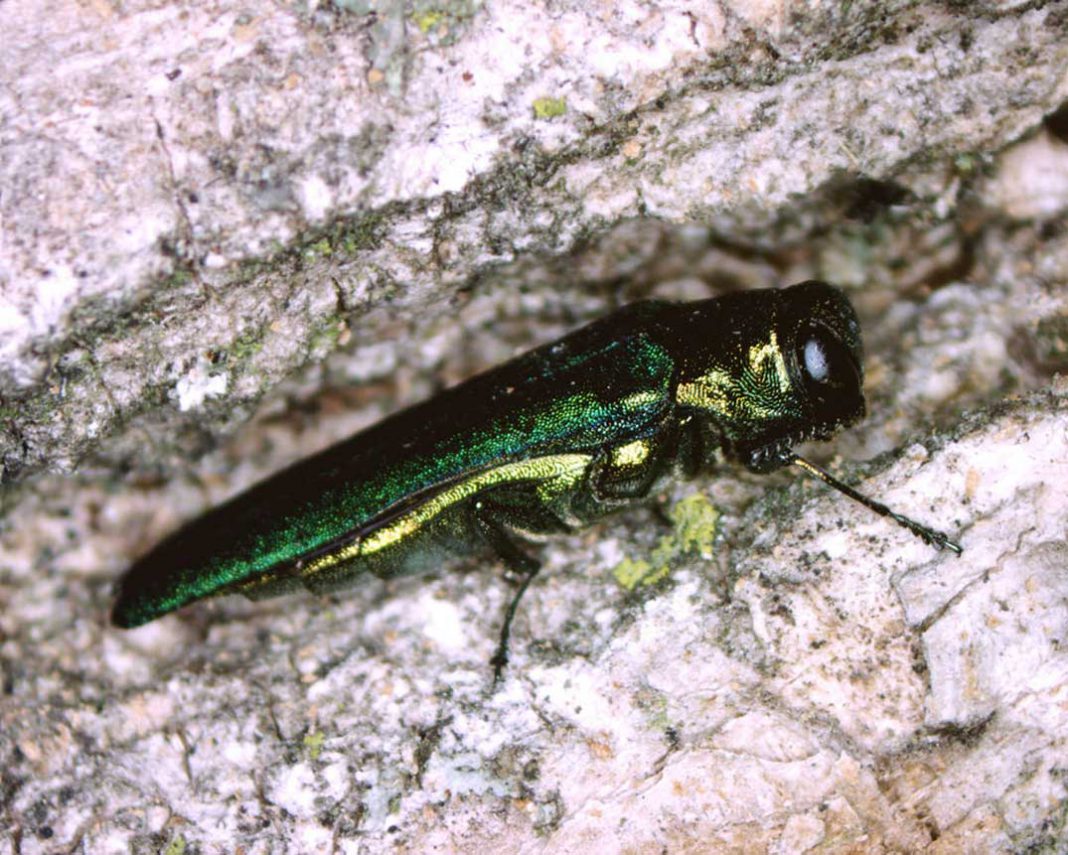SAULT STE. MARIE—Looking for a silver lining to the blast of arctic air that has dropped much of the Northern hemisphere into the deep freeze? Well, perhaps it’s not entirely silver, but the impact of the extreme cold on the emerald ash borer will likely help to stem, if not completely eradicate the spread of the invasive insect that has been devastating ash tree stands across North America.
The Expositor contacted the Invasive Species Centre in Sault Ste. Marie to find out what, if any, impact the cold weather will have on the emerald ash borer.
“The short abbreviated answer is that it will reduce some, but not all, of the emerald ash borer,” said David Nisbet, partnership and science manager at the Invasive Species Centre. “The emerald ash borer is a really cold-tolerant insect, well adapted to cold temperatures.”
While some studies have shown that at -20° Fahrenheit (that’s -28° Celcius in Canadian) 50 percent of the emerald ash borer population will expire, and those mortality rates escalate dramatically as the temperatures reach -30°F (-34°C) to as much as 90 percent, the species can still be expected to rebound from the remaining 10 percent. Still, with temperatures diving even colder to below -35°C there is hope of a significant slowing of the spread of the invasive species.
“There is so much variability,” cautioned Mr. Nisbet. The emerald ash borer winters beneath the bark of the tree in a pre-pupal state. “So the wind chill does not come into play,” he said. “Snow cover near the bottom of trees can insulate the bark, a southern exposure can impact the cold, as can whether the tree is in an exposed location or located within a city or near buildings where there isn’t as much exposure.”
The main hope for dealing with the emerald ash borer remains in finding a suitable bio-centric solution, perhaps a native parasitic species that can be introduced to tackle the invasive insect, or even species from the region of Asia where the ash borer originated, provided those species are specific enough in their prey to be considered a reasonably low risk to the ecology. Examples include a number of parasitic wasps that have been found to prey on the emerald ash borer.
What the cold spell will likely do, however, is provide landowners and scientists some breathing room to find a solution by slowing the insect’s spread.
For now, the best solution to deal with specific high-value trees on a householder’s property is an insecticide treatment, although that solution is relatively expensive so not all that viable for large tree stands or commercial lots.
Still, a slightly gilded lining to the cloud is better than none. Our frigid climate does help to keep a lot of the more poisonous critters somewhat at bay—so bundle up, hunker down and enjoy the leaf cover come spring. The bad(?) news is that things are supposed to warm up considerably by the weekend.




